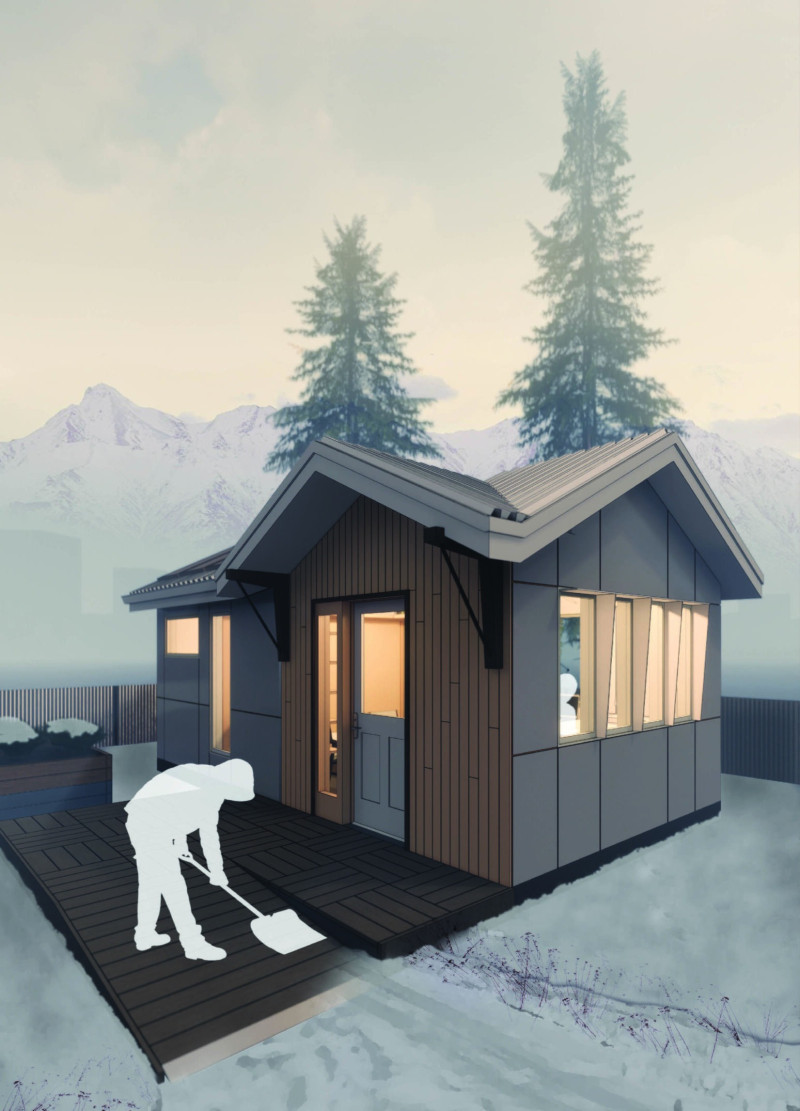5 key facts about this project
The project focused on Accessory Dwelling Units (ADUs) in Anchorage, Alaska, addresses the growing need for affordable housing within urban communities. These small residential units are designed to fit on existing single-family lots, thus allowing for increased density while minimizing the impact on surrounding areas. The design aims to offer practical living solutions, making efficient use of space while promoting community integration.
Accessibility
Accessibility is a core feature of the design, achieved by removing stairs and ladders. Everything necessary for daily living is arranged on one level. This layout makes it easier for people, including those using mobility aids, to move freely. A low foundation system reduces the need for ramps, creating a more inviting living space that accommodates all residents comfortably.
Affordability
To tackle affordability, the design focuses on a smaller footprint. This results in lower construction costs and reduced long-term expenses. By using standardized materials such as windows, doors, and cabinets, building becomes more cost-effective. The project employs modular construction techniques, allowing quick assembly on site to minimize construction time and disruption to the neighborhood.
Efficiency
Energy efficiency is emphasized throughout the project. The ADUs achieve a six-star energy rating, indicating a meaningful reduction in energy use. Techniques like superinsulation contribute to thermal performance, while Structural Insulated Panels (SIPs) are utilized for walls and roofs. The inclusion of high-efficiency water heating systems, along with the option for solar photovoltaics, provides sustainable energy solutions that can adapt to homeowners’ financial situations.
Design Detail
The open-plan layout of the ADUs is a key design element, allowing for efficient use of space. This arrangement combines areas for cooking, sleeping, and gathering, promoting a sense of community among residents. The thoughtful organization of these units not only fulfills practical needs but also encourages social interaction, contributing positively to life in the neighborhood. The design reflects a deep understanding of urban living challenges while enhancing the quality of life for those who inhabit these homes.






















































